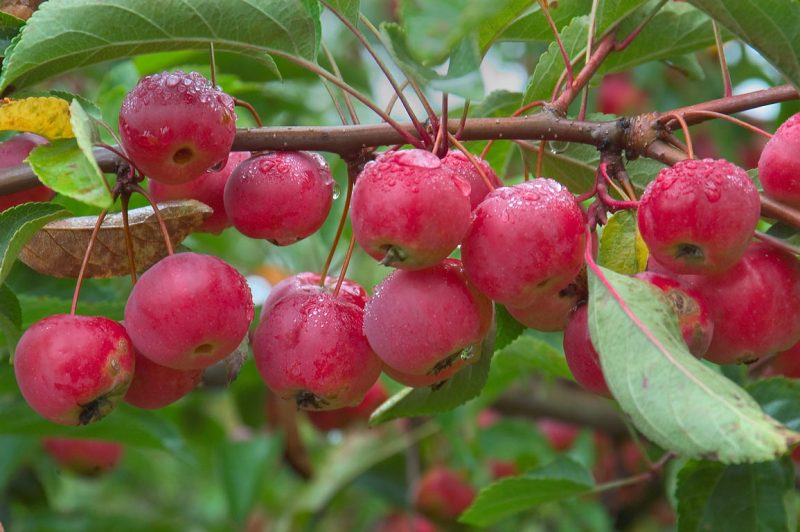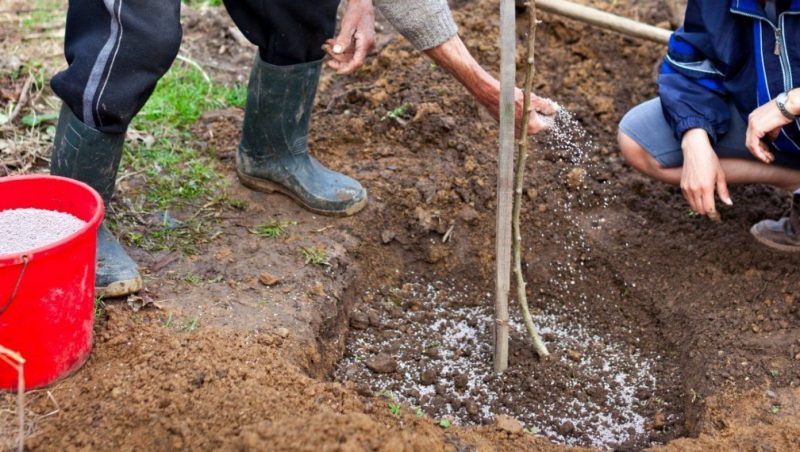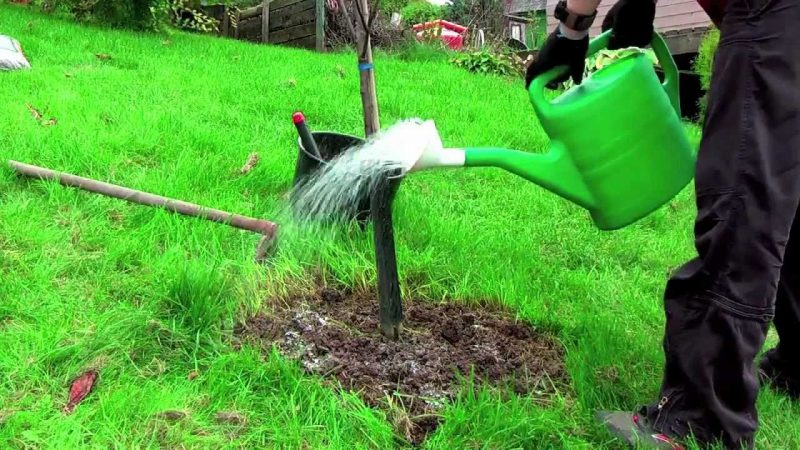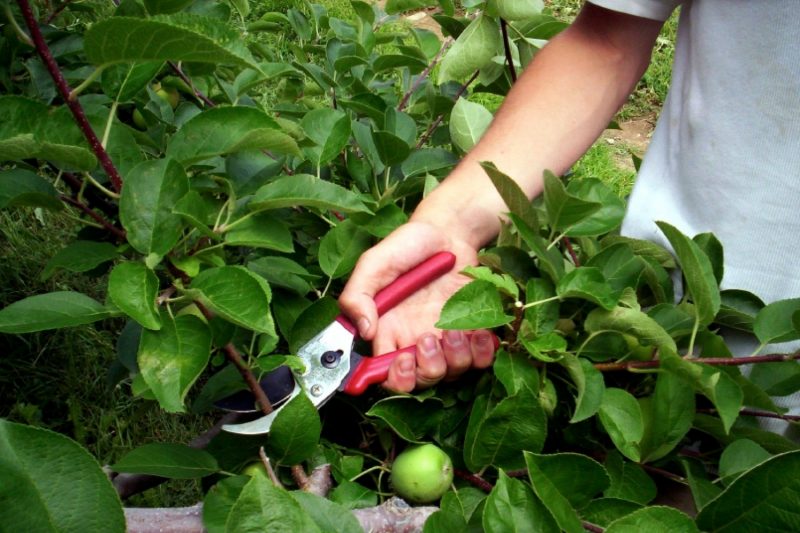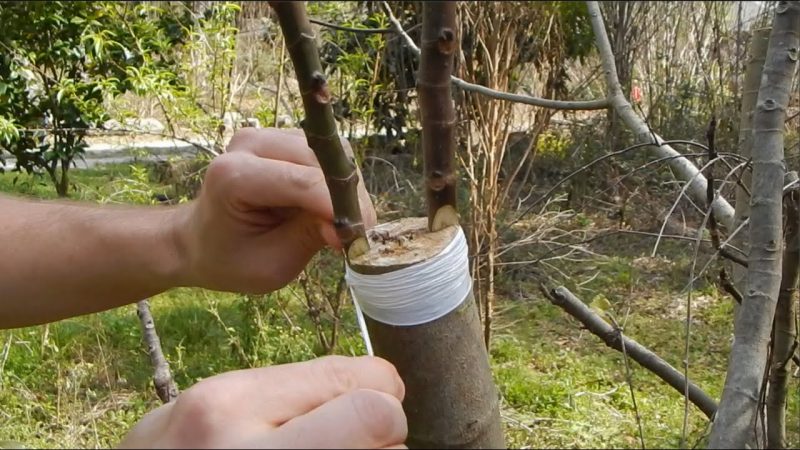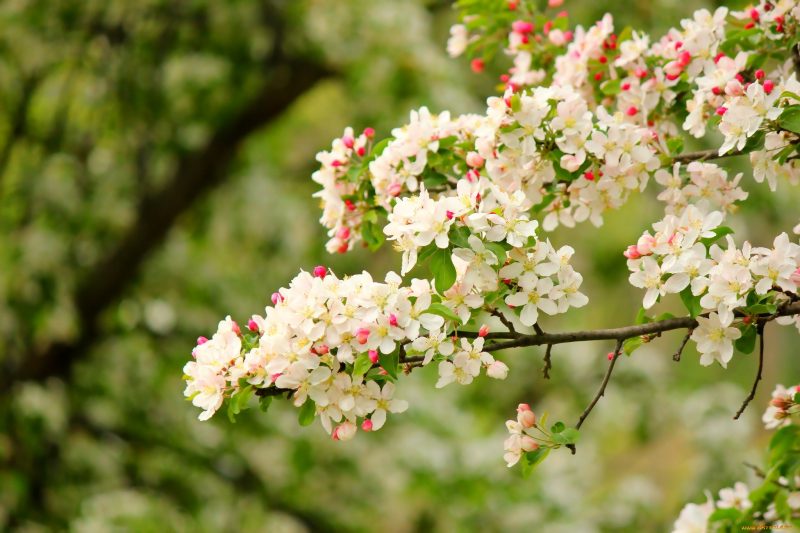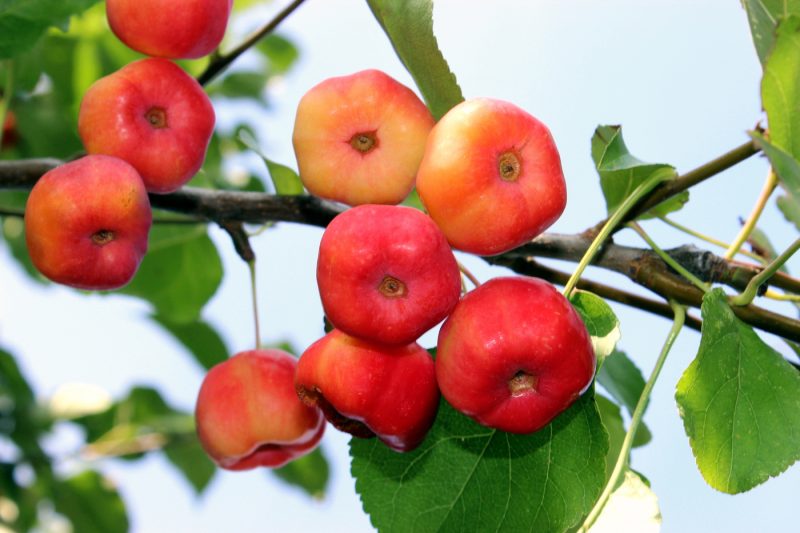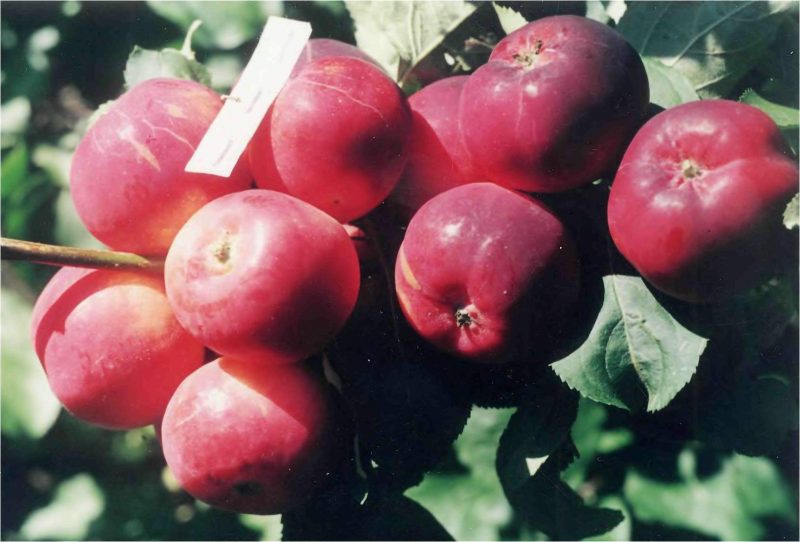Ranetki apples are a type of variety that unites small-fruited species, bred due to the crossing of Siberian berry and saphenous apple trees. Despite the small size of the fruit, the tree has many advantages that have made it particularly popular in vast areas of the middle lane.
Material Content:
Description of varieties of apples Ranetka
Almost no garden in the northern regions of Russia could have done without Ranetka, which exudes a wonderful delicate aroma in spring, gives a cooling cool in summer, and gives a rich harvest in autumn.
There are many varieties, among which there are several species that are most popular among experienced gardeners:
- "Golden Runet" - resistant to many fungal diseases, tolerates transportation, which is of great importance in industrial cultivation.
- "Long" is a medium-sized variety. Fruiting occurs 4 years after planting, in early autumn, when fragrant apples ripen. The weight of one instance reaches 13 g. The yield from a tree is from 25 kg.
- “Dobrynya” - 30-50 kg are removed from apple trees of this variety, the harvest is in the first ten days of September. Ripe fruits can be tasted already at the age of four. The apple tree is resistant to scab, fruits have a sweet and sour taste with a pleasant astringency, and are successfully used for the production of juices.
- “Raspberry crimson” - trees enter the fruiting phase in the second year after planting seedlings. The yield is stable, but the average apple mass does not exceed 6 g.The variety is very winter-hardy and is often cultivated on an industrial scale for processing the product.
- “Ranetka is amber”, it is also “Altai Amber”, a small-fruited variety represented by tall apple trees with a wide pyramidal crown, on which sweet and sour fruits weighing 10 g or more appear in the first half of September. Yield is stable. Among the shortcomings, there is a low tolerance to scab and apple moth.
On a note! The first of the above varieties of "Golden Golden" compares favorably with other representatives of this type in their wonderful fruits that can be stored until the next harvest.
Advantages and disadvantages
Among the indisputable advantages noted by many gardeners, it is necessary to highlight the following indicators:
- high resistance to frost, so Ranetki apples can be grown in Siberia;
- undemanding to leaving;
- possibility of use for processing;
- unpretentiousness (keeping quality) during storage;
- friendly ripening;
- a large number of fruits.
The cons include:
- apples are very small;
- sour taste of fruit;
- the growth of trees, which is why large areas are required for cultivation;
- low resistance to diseases and pests.
However, the last drawback does not apply to all varieties.
Features of planting and care
It is no coincidence that Ranetki's apple trees are considered an excellent choice for lazy gardeners. They develop well on loamy soils with a high fertile layer, and even if the soil composition is somewhat poor, the culture will still grow. The main thing is that the soil does not consist of one sand or clay. A place under a tree can be allotted in light shading, while you should not be afraid of snow deposits - Winter ranets are hardy.
The optimal time for planting seedlings in open ground falls in two periods:
- early spring, before the start of sap flow;
- mid-autumn, so that the seedlings have time to take root by the arrival of cold weather.
Landing technology:
- At the selected site two weeks before planting seedlings, pits are prepared, the sizes of which depend on the root system of trees. The arrangement of the recesses can be 5x5 m for tall varieties and 4x4 m for medium-sized.
- Immediately before starting work, ⅓ of the hole is filled with a fertile mixture of mineral and organic fertilizers with the addition of earth.
- Pegs are also installed in the recesses.
- Next, planting material is dropped, which is dug in such a way that the growth point remains slightly above the ground level.
- Trunk circles are trampled and watered at the rate of 20 liters per copy.
- Young seedlings are tied up, the ground under them is mulched.
On a note! When choosing a landing site, one should not forget that groundwater should lie quite deep. Otherwise, it is necessary to place broken brick in the pit as a drainage layer.
After the completion of planting measures, successful cultivation, which will be evidenced by a plentiful and high-quality crop, will include the implementation of a number of mandatory manipulations.
Watering and feeding
In the first year of life, immediately after planting, young apple trees should be watered every week with 40 liters of water under one tree. Even in wet summers, immature plants require regular irrigation. In the future, these works are carried out as necessary - in a long dry season, hot weather, in a little snowy winter, when the reserves of natural moisture are very poor.
During the growing season, apple trees are fed three times:
- At the end of April, organic fertilizers or nitrogen-containing mineral agrochemicals are used.
- Before flowering, phosphorus-potassium complexes are used. Moreover, if the weather is hot outside, then a liquid working solution is prepared, consisting of 200 liters of water, 780 g of potassium sulfate, as well as 1 kg of superphosphate. The consumption rate per tree is 50 liters.
- The last type of fertilizer is also used during fruit loading to enrich the trunk circle. The composition can be used in granular form or in a liquid state.
During top dressing, so as not to burn the trees, fertilizers are applied at a distance of half a meter from the stem.
In addition, do not forget about the need to loosen the trunk circle after irrigation, so as to provide the roots with free oxygen access. To reduce the time for loosening, you can cover the soil around the stem with a layer of mulch.
Cropping and shaping the crown
The formation of the crown is carried out at the initial stages of the development of the apple tree. 5-6 skeletal branches are selected, and the rest are removed. In the future, pruning, in which selected shoots are shortened, and weak and damaged branches are removed, is carried out every spring. Thanks to this procedure, the apple tree will not only look neat and compact, but also give a bountiful harvest.
On a note! For cutting, a hacksaw and a sharp secateurs are used, the size of which depends on the thickness of the branches.
Variety propagation
The presented type of apples Ranetok is bred using seeds. Due to their extraordinary vitality, new specimens develop from them even when sowing in open ground. However, hybrid varieties for the preservation of all qualities are propagated by grafting, which can be done on wild trees grown from seeds.
Technology of budding (vaccination by kidney):
- In the warm period, a sleeping kidney with adjacent tissues is cut out of the annual scion shoot.
- A T-shaped incision is made on the stock of the stock, into which the resulting flap is inserted.
In the southern regions, where the temperature regime is quite stable, the procedure can be carried out in the first half of spring during intense sap flow, which speeds up the vaccination process.
Flowering period of a tree
Depending on weather conditions and a particular variety, flowering periods may occur in late spring and early summer. The duration of this phase is on average 10 days, during which the crown is covered with a large number of white fragrant flowers.
Ripening and fruiting dates
As mentioned above, the fruit harvest season usually falls on the first half of September. Yields are quite high - from 50 to 100 kg. Moreover, frost does not adversely affect the number of fruits taken. Fruiting occurs 2-4 years after planting, depending on the variety.
Important! When choosing the desired type of Ranetka apple tree, it is necessary to pay attention to the frequency of fruiting: in some representatives the yield is stable, and in others - with an interval of a year.
Diseases and Pests
Trees, depending on the variety and resistance to harmful organisms, suffer from scab, black cancer, anthracnose, moniliosis, cytosporosis, spotting, apple moth / flower beetle, aphids, moths and leafworms.
In order not to deal with the aforementioned ailments and parasites, when they already harm the culture, preventive measures to protect plants should be carried out in a timely manner:
- before the sap flow begins, spraying is carried out, in which the entire wintering stock of pests dies. For this, a urea solution is used, prepared from 700 g of agrochemical and 10 l of water;
- during the formation of the “pink cone", processing with a Bordeaux mixture with an insecticide is arranged;
- in the summer, hunting belts are used that do not allow pests to move around the trunk;
- in autumn, all fallen leaves are removed from under the trees, where the infection accumulates.
On a note! The above drugs can be used in the case when infection of apple trees has already occurred.
How Ranetki differ from other apples
Gardeners identify several important values that are specific to Ranetki:
- miniature fruit size;
- high frost resistance, which is even higher than that of the winter variety of apples;
- ripening and abundant fruit harvest;
- unpretentiousness in leaving;
- pleasant tartness of sweet and sour apples.
Ranetki apples are an excellent raw material for a variety of preparations, ranging from jam to juice. These unpretentious trees will always delight with a plentiful harvest, and such fertility will last at least 10 years.


